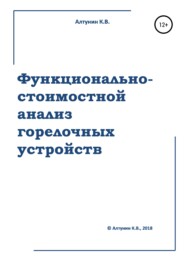По всем вопросам обращайтесь на: info@litportal.ru
(©) 2003-2025.
✖
Basics of Scientific Research
Настройки чтения
Размер шрифта
Высота строк
Поля
Both approaches have their place in research. Both have their strengths and weaknesses. In many studies you have to combine both qualitative and quantitative approaches. For example, suppose you have to find the types of cuisine/accommodation available in a city and the extent of their popularity. Types of cuisine is the qualitative aspect of the study as finding out about them entails description of culture and cuisine. The extent of their popularity is the quantitative aspect as it involves estimating the number of people who visit a restaurant serving such cuisine and calculating the other indicators that reflect the extent of popularity [2, 3, 4].
Science
Here are some common definitions of science:
– Branch of knowledge or study dealing with a body of facts or truths systematically arranged and showing the operation of general laws, e.g., the mathematical science;
– Systemic knowledge of the physical or material world gained through observations and experimentation;
– Systematized knowledge in general;
– Any of the branches of natural or physical sciences;
– A particular branch of knowledge;
– Knowledge, as of facts or principles; knowledge gained by systematic study;
– Skill, esp. reflecting a precise application of facts or principle; proficiency.
The word Science comes from Latin word "scientia" meaning "knowledge" and in the broadest sense it is any systematic knowledge-base or prescriptive practice being capable of resulting in prediction. This is why science is termed as highly skilled technique or practice. However, in more contemporary terms, science is a system of acquiring knowledge based on scientific process or method in order to organize body of knowledge gained through research. Science remains a continuing effort on the part of human being to discover and increase knowledge through research. Scientists can make observations, record measureable data related to their observations, analyze the information in hand in order to construct theoretical explanations of phenomenon involved.
Man's respect for knowledge is one of his most peculiar characteristics. Science came to be the name of the most respectable kind of knowledge. But what distinguishes knowledge from superstition, ideology or pseudoscience? The Catholic Church excommunicated Copernicans, the Communist Party persecuted Mendelians on the ground that their doctrines were pseudoscientific. The demarcation between science and pseudoscience is not merely a problem of armchair philosophy: it is of vital social and political relevance. Many philosophers have tried to solve the problem of demarcation in the following terms: a statement constitutes knowledge if many people believe it sufficiently strongly. But the history of thought shows us that many people were totally committed to absurd beliefs. If the strength of beliefs were a hallmark of knowledge, we should have to rank some tales about demons, angels, devils, and of heaven and hell as knowledge. Scientists, on the other hand, are very skeptical even of their best theories. Newton's is the most powerful theory science has yet produced, but Newton himself never believed that bodies attract each other at a distance. So no degree of commitment to beliefs makes them knowledge. Indeed, the hallmark of scientific behaviour is a certain skepticism even towards one's most cherished theories. Blind commitment to a theory is not an intellectual virtue: it is an intellectual crime. Thus a statement may be pseudoscientific even if it is eminently 'plausible' and everybody believes in it, and it may be scientifically valuable even if it is unbelievable and nobody believes in it. A theory may even be of supreme scientific value even if no one understands it, let alone believes it [5].
Scientific knowledge
Scientific knowledge has got its own levels [1]. From the school bench you probably heard many times that there could be something like empirical and theoretical, and, on the other hand, there is still a great feasibility you knew about such a difference being a student or a full-time specialist at any sphere of work. So, empirical and theoretical levels are two different floors of scientific knowledge that comprise their unique and general forms and methods. Let’s look at Fig. 1, where you can see a so-called scientific knowledge block. The author decided to show it up in 3D because it would be more picturesque and, in addition, shorter to be reviewed.
Well, if we take into consideration first empirical level, we see it has such unique methods as experiment and observation, and own forms such as protocol suggestions, data, phenomenological theories, laws.
And theoretical level has own methods including idealization, formalization, from the abstract to the concrete, and unique forms including theory and hypothesis.
But if we try to look at the highest flatness, we can notice general methods and general forms that can belong both to empirical and theoretical levels.
From this first step let’s make an attempt to describe all of them and give them definitions and interpretations.
Fig. 1. Scientific Knowledge Block
Observation
Observation is an active acquisition of information from a primary source. In living beings, observation employs the senses. In science, observation can also involve the recording data via the use of instruments. The term may also refer to any data collected during the scientific activity. Observations can be qualitative, that is, only the absence or presence of a property is noted, or quantitative if a numerical value is attached to the observed phenomenon by counting or measuring.
Observation in Science
The scientific method requires observations of nature to formulate and test hypotheses. It consists of these steps:
1. Asking a question about a natural phenomenon.
2. Making observations of the phenomenon.
3. Hypothesizing an explanation for the phenomenon.
4. Predicting a logical consequence of the hypothesis.
5. Testing the hypothesis by an experiment, an observational study, or a field study.
6. Creating a conclusion with data gathered in the experiment, or forming a revised/new hypothesis and repeating the process.
Observations usually play a role in the second and fifth steps of the scientific method. However, the need for reproducibility requires that observations by different observers can be comparable. Human sense impressions are subjective and qualitative making them is difficult to record or compare, shared by all observers, and counting how many of the standard units are comparable to the object. Measurement reduces an observation to a number which can be recorded, and two observations which result in the same number are equal within the resolution of the process.
Senses are limited, and are a subject to errors in perception such as optical illusion. Scientific instruments were developed to magnify human powers of observation, such as weighing scales, clocks, telescope, microscopes, thermometers, cameras, and also translate into perceptible form events that are unobservable by human senses, such as indicator dyes, voltmeters, spectrometers, infrared cameras, oscilloscopes, interferometers, x-ray machines and radio receivers, etc.
Observations in philosophy
"Observe always that everything is the result of a change, and get used to thinking that there is nothing Nature loves so well as to change existing forms and to make new ones like them."
– Meditations. iv. 36. – Marcus Aurelius
Observation in philosophical terms is a process of filtering sensory information through the thought process. Input is received via hearing, sight, smell, taste or touch and then analyzed through either rational or irrational thought. You can see a parent beat his child; you observe that such an action is either good or bad.
Deductions about what behaviors are good or bad may be based in no way on preferences about building relationships, or study of the consequences resulting from the observed behavior. With the passage of time, impressions stored in the consciousness about many related observations, together with the resulting relationships and consequences, permit the individual to build a construct about the moral implications of behavior.
Experiment
Experiment is an orderly procedure carried out with the goal of verifying, refuting or establishing the validity of a hypothesis. Experiments provide insight into cause-and-effect by demonstrating what outcome occurs when a particular factor is manipulated. Experiments vary greatly in their goal and scale, but always rely on repeatable procedure and logical analysis of the results. There are also existing natural experimental studies.
A child may carry out basic experiments to understand gravity, while teams of scientists may take years of systematic research to advance the understanding of a phenomenon. Experiments and other types of hands-on activities are very important to student learning in a science classroom. Experiments can raise test scores and help a student become more engaged and interested in the material they are learning, especially when used over time. Experiments can vary from personal and informal natural comparisons (e.g. tasting a range of chocolates to find a favorite one), to highly controlled (e.g. tests requiring complex apparatus overseen by many scientists that hope to discover information about subatomic particles). Uses of experiments vary considerably between the natural and human sciences.
Experiments typically include control, which are designed to minimize the effects of variables other than the single independent variable. This increases the reliability of the results, often through a comparison between control measurements and other ones.
Scientific controls are a part of the scientific method. Ideally, all variables in an experiment will be controlled (accounted for by the control measurements) and none will be uncontrolled. In such an experiment, if all the controls work as expected, it is possible to conclude that the experiment is working as intended and that the results of the experiment are due to the effect of the variable being tested.
Designs of Experiment
The types of Experimental Designs usually include a Completely Randomized Design, a Randomized Block Design and a Matched Pairs Design [6].
In a Completely Randomized Design each experimental unit is randomly assigned to a random group to receive a different treatment, each unit in the same group receives the same treatment, and at the end of experiment you will compare the results from each treatment (Fig. 2, Fig. 3). Let’s show up how a Completely Randomized Design would be used in the following example:
A researcher wants to conduct an experiment to determine which environment is best suited for studying – a library, in one’s own room or outside. A total of 30 university students volunteer to participate in the experiment. So we have three treatments such as the library, in one’s own room or outside. Since we have three treatments we will have three groups receiving the treatments, and since there are 30 university students, these 30 subjects will be randomly assigned to the three groups to receive the treatments.
Fig. 2. Completely Randomized Design
And at the end of the experiment we will compare results from each treatment.
Fig. 3. Completely Randomized Design
Let’s see that a researcher believes that gender has an effect on the results. In a case like this we would use a Randomized Block Design that doesn’t immediately randomly assign the experiment units to receive treatments, we, first, assign people into a block based on the characteristic that’s expected to influence the response to its treatments. And this example where gender would be a blocking variable, so first we separate the experimental units based on gender, one block will be for females and one block will be for males. There are 18 females and 12 males (Fig. 4).
Вы ознакомились с фрагментом книги.
Приобретайте полный текст книги у нашего партнера:
Приобретайте полный текст книги у нашего партнера:









